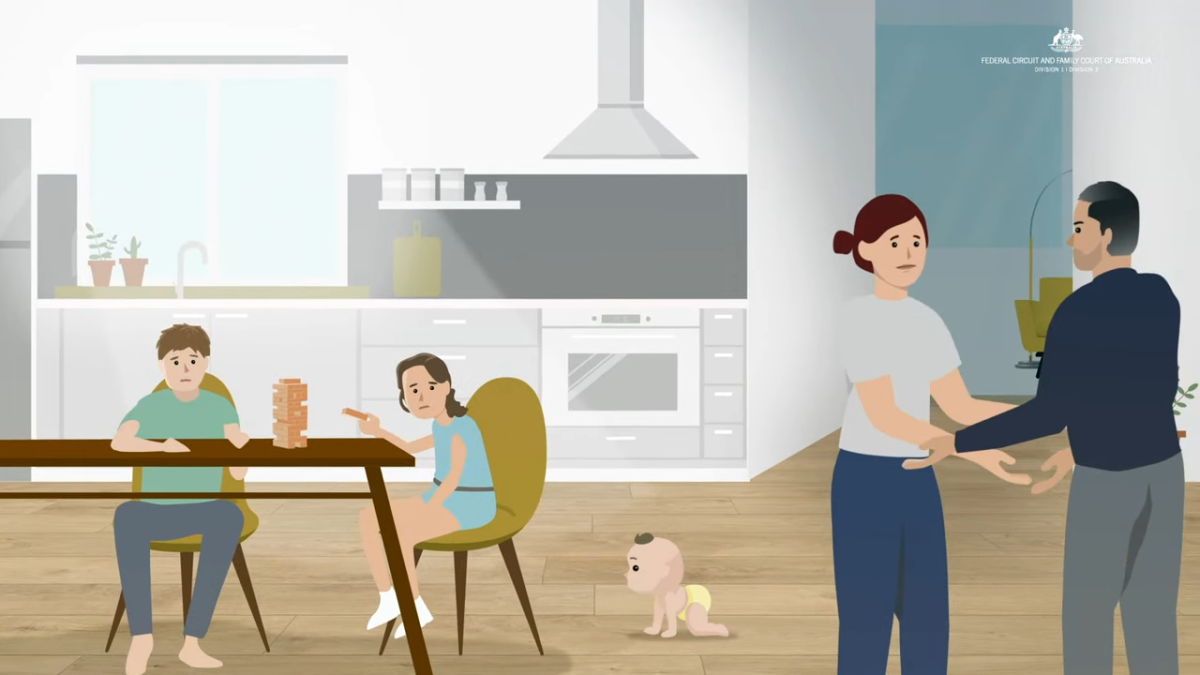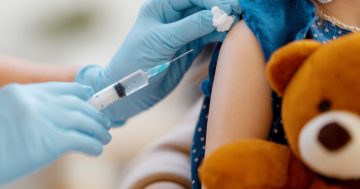
How is the voice of the child heard? is one of three new short explainer films housed on the Federal Circuit and Family Court of Australia website. Image: Screenshot.
Three animated short films will help demystify critical components of our family law systems.
Launched by the Federal Circuit and Family Court of Australia (Divisions 1 and 2), the films are designed to make the information more immediately accessible and digestible for the public.
Representatives from various state Women’s Legal Services and the domestic violence advocacy sector provided invaluable input towards the scripts and development of the films, housed on the Federal Circuit and Family Court of Australia website.
The first film explains how family violence is defined in family law and provides examples of harmful behaviours, including physical and non-physical acts of violence, which constitute coercive control.
The second explores how the voice of the child is heard – an important area that may not be well understood, according to Law Council of Australia Family Law executive chair and DDCS Lawyers partner Di Simpson.
“We don’t necessarily want children immersed in the knowledge of disputes between their parents, caught in the middle, or in a situation where a parent is trying to get them to say something they think might be useful to their case,” Ms Simpson said.
“And certainly, no child is compelled to say what their views are or obligated to engage in court processes. However, under the Family Law Act the views of children are important and can be given significant weight.
“Resources like this can help reassure people that the experiences and views of children can be taken into account during court processes in a way that’s appropriate and safe for them. They also take into account several factors including the age of the child, whether they could be subject to influence or if they have an understanding of the impact of decisions they’re making.”

Law Council of Australia Family Law executive chair and DDCS Lawyers partner Di Simpson says there are appropriate and safe ways for the courts to ensure a child’s voice is heard. Photo: DDCS.
The video explains that courts in Australia have an internal Court Children’s Service staffed by highly trained and skilled psychologists and social scientists, and the role of an Independent Children’s Lawyer (ICL).
“For example, a report can be created by a psychologist or counsellor managed by the court or an Independent Children’s Lawyer can be appointed to provide the court with information as to where the child is at, or if the child has said anything relevant to the case,” Ms Simpson explained.
“The point is to look for and place evidence of the views of children in front of the court in ways that prioritise their protection.”
The third short film explains the typical court process and outlines how the courts may support children and families, particularly when family violence and other risk issues have been identified.
The three animated films seek to unpick serious, complex and sometimes triggering topics in an accessible and digestible format.
The films alongside other initiatives such as Lighthouse, the Evatt List, PPP500 and the updated Family Violence Plan and Best Practice Principles, aim to prioritise the safety of children and adults who have been subjected to family violence.
They’re part of the courts’ commitment to shine a light on the insidious nature of family violence, according to chief justice Will Alstergren (AO).
“Separation can be extremely stressful, and a time of heightened risk. It is important those who engage with the court system know what to expect, and can have confidence that the courts take family violence very seriously,” he said.
“We want people to feel safe to inform the courts about the violence they have experienced so judges can make decisions in the best interests of children.”
Chief justice Alstergren denounced the alarming statistics around family violence in our society, calling it “a national disgrace”.
“It has been reported that in the first 32 weeks of 2023, 44 women have been killed by violence. Likewise, court data tells us that in the last financial year, family violence has been alleged in 83 per cent of parenting cases. In 72 per cent of parenting cases, it has been alleged that a child has been abused or was at risk of abuse,” he said.
“It is simply not acceptable.”
View the short films at the Federal Circuit and Family Court of Australia.





















